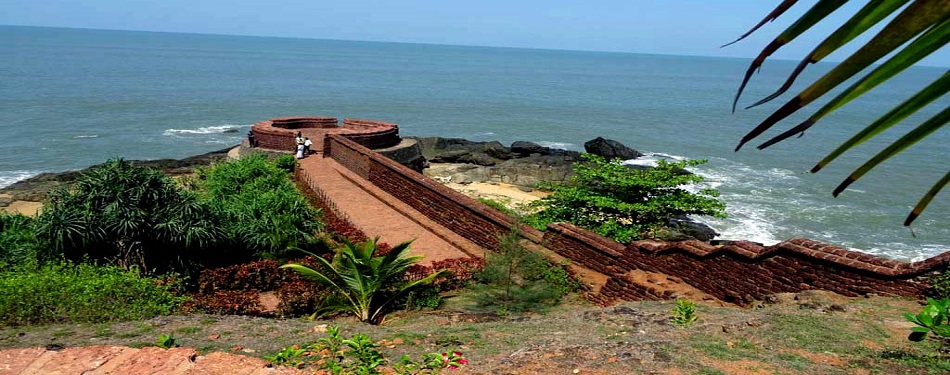
- 1650 AD
- In Bekal,Kasaragod
Bekal
Bekal, a tranquil and beautiful place lies at the southwestern tip of India, is located on the shoreline of Pallikkara village in Kasaragod district. Located 16kms south of Kasaragod town on the National Highway, Bekal is famous for its largest and best preserved forts in Kerala. This serene place is famous as the land of gods, sea-kissed forts, majestic hills, rivers and an enchanting beach.
India's first planned beach destination developed without disturbing the eco-balance of the region, Bekal is an ideal place for relaxation and for a long walk. The shallow Bekal beach offers a spectacular view of the Bekal fort - the largest and preserved forts in Kerala and has plenty of facilities for recreation. Rama Nayak, a local Kannada writer is of the view that the name 'Bekal' is derived from the word 'Baliakulam' which means a big palace. The place is said to have been the seat of a big palace in the past. In the course of time the word term Baliakulam was changed to Bekulam and later to Bekal. Under the power of Kolathanadu, one of the most powerful feudal kingdoms on the Malabar Coast, Bekal became an important maritime centre and a crucial port town of Tulunadu, the name by which the old Kasaragod was known to the world.
The extraordinary impact the place had on the political and economic realm of the region attracted many rulers and chieftains to this place. They successively attacked and annexed the region that brought them the power to control the political and economic dominion of the state. Bekal, a great place to pause and explore, is now an international tourist destination and a hub of tourist circuits to Malabar.
Geography and Demography
To the south of Bekal is the Kannur District and Dakshina Kannada district of Karnataka forms the northern boundary. The mighty Western Ghats forms a wall along the eastern side. The western side is eternally caressed by the Arabian Sea. Covering an area of 1992 km² the district is home to 1,302,600 people (according to 2011 census).
Season or Climate
The diversity of the physical features results in a corresponding diversity of climate. In the plains, the climate is normally hot. Though the mean maximum temperature is only around 32 Celsius, the heat is oppressive in the moisture laden atmosphere of the plains. Humidity is very high and rises to about 90 percent during the south-west monsoon. The annual variation of temperature is small. The south-west monsoon starts towards the end of May or the beginning of June, heralded by thunder-storms and holds till September when the rain fades out. October brings in the north-east monsoon. Dry weather sets in by the end of December. January and February are the coolest months of the year. March, April and May are generally very hot.